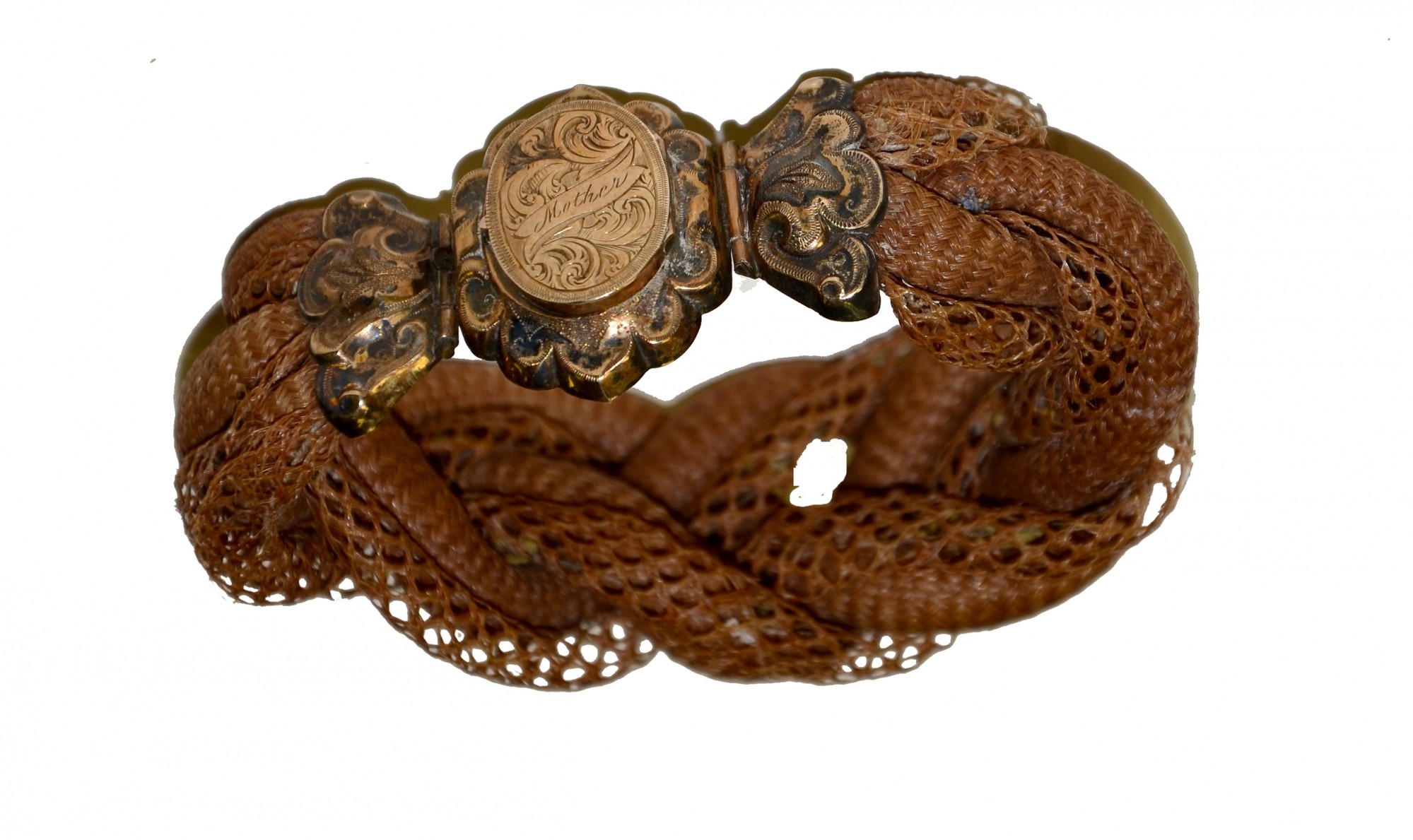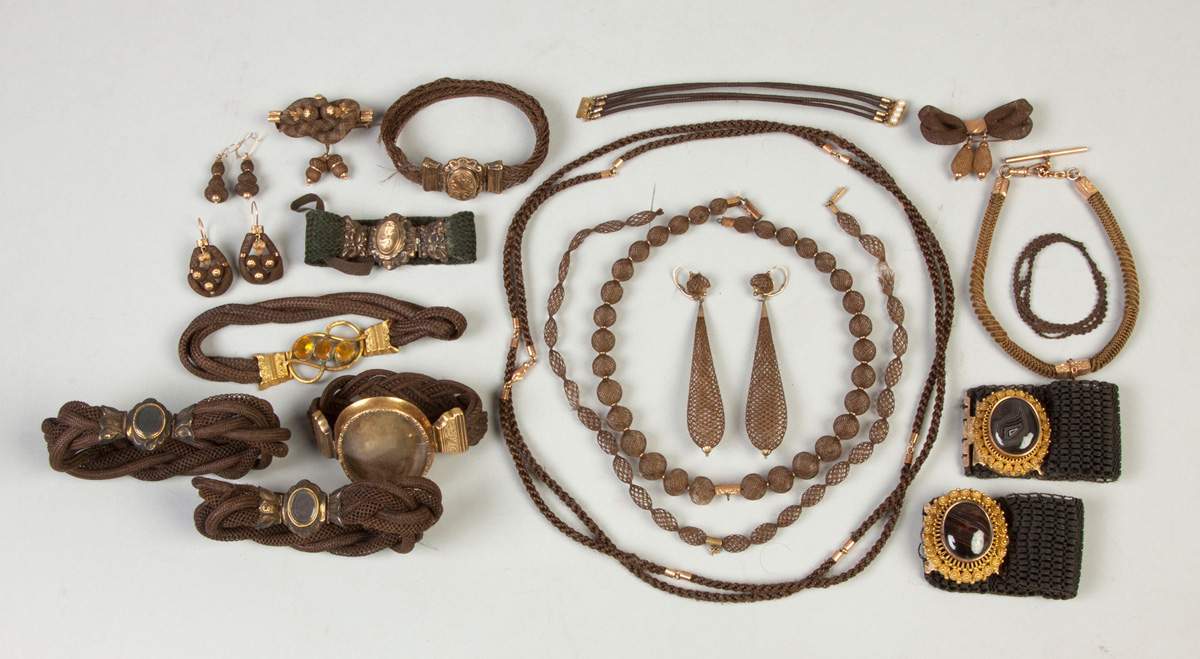Victorian hair jewelry, an intriguing and captivating aspect of Victorian culture, holds a unique place in the annals of fashion and sentimentality. From its origins as a symbol of mourning to its evolution into a cherished keepsake, this exquisite form of adornment offers a glimpse into the intricate tapestry of Victorian society and the enduring power of human emotion.
Beyond its aesthetic appeal, Victorian hair jewelry played a profound role in expressing love, remembrance, and social status. It served as a tangible connection to departed loved ones, a symbol of enduring bonds, and a testament to the enduring nature of human relationships.
Victorian Hair Jewelry History

Hair jewelry holds a special significance in Victorian society, symbolizing love, remembrance, and mourning. The Victorians believed that hair held a person’s essence, and wearing it close to the body was a way to stay connected to loved ones.
Types of Hair Jewelry
Hair jewelry took many forms during the Victorian era, including:
- Mourning Jewelry:Intricately crafted lockets, pendants, and brooches containing a lock of hair from a deceased loved one, often accompanied by a miniature portrait or sentimental inscription.
- Love Tokens:Small, often heart-shaped lockets or rings exchanged between lovers as a symbol of their affection and commitment.
- Keepsake Jewelry:Bracelets, necklaces, and earrings adorned with woven or braided hair, serving as a tangible reminder of cherished relationships.
- Sentimental Jewelry:Elaborate hair wreaths and frames, created to display locks of hair as a decorative and sentimental keepsake.
Symbolism and Meaning

Victorian hair jewelry held profound symbolic meanings, transcending mere adornment. It represented connections, remembrance, and social status.
Types and Symbolism
Different types of hair jewelry conveyed specific messages:
- Lockets: Contained a lock of hair from a loved one, symbolizing their presence and connection.
- Brooches: Hair was often woven into brooches, representing the bond between individuals or families.
- Rings: Hair-adorned rings symbolized eternal love, especially in engagement and wedding bands.
- Necklaces: Hair necklaces represented close relationships, often given as gifts between friends or family members.
Connecting with the Departed
Hair jewelry served as a tangible link to loved ones who had passed away. Wearing a locket with a lock of their hair provided comfort and a sense of closeness.
Social Status and Relationships, Victorian hair jewelry
Hair jewelry also reflected social status and relationships:
- Mourning jewelry: Black hair jewelry with jet or onyx accents was worn to signify mourning for a deceased loved one.
- Sentimental jewelry: Hair jewelry given as gifts expressed affection and close bonds.
- Family heirlooms: Hair jewelry was often passed down through generations, connecting family members across time.
Techniques and Craftsmanship

Victorian hair jewelry was crafted using various techniques and materials. Hair was often woven, braided, or plaited into intricate designs. It was also set into gold or silver frames, or encased in glass or crystal.
Materials
- Human hair was the primary material used in Victorian hair jewelry. Hair from the deceased was often used, as it was seen as a way to preserve their memory.
- Gold and silver were the most common metals used in hair jewelry. Gold was seen as a symbol of wealth and status, while silver was more affordable.
- Glass and crystal were also used in hair jewelry. Glass was often used to create cameos or lockets, while crystal was used to create beads or pendants.
Techniques
- Weaving: Hair was often woven into intricate patterns, such as braids, plaits, and chevrons.
- Braiding: Hair was also braided into a variety of styles, such as three-strand braids, four-strand braids, and French braids.
- Plaiting: Hair was also plaited into flat, decorative strips.
- Setting: Hair was often set into gold or silver frames. This was done by attaching the hair to a backing material, such as fabric or paper, and then covering it with a metal frame.
- Encasing: Hair was also encased in glass or crystal. This was done by placing the hair in a glass or crystal container and then sealing it with a lid.
Modern Interpretations
Victorian hair jewelry continues to inspire contemporary jewelry designers, who incorporate elements of its intricate craftsmanship and sentimental value into their work.
Modern interpretations often blend Victorian techniques with contemporary materials and aesthetics, creating unique and wearable pieces that resonate with both history and modernity.
Modern Designers
Several contemporary jewelry designers have gained recognition for their incorporation of Victorian hair jewelry elements into their work:
- Melanie Georgacopoulos: Known for her delicate lockets and pendants that feature intricate wirework and braided hair.
- Zoe Chicco: Creates contemporary heirlooms that combine Victorian-inspired designs with ethically sourced gemstones.
- Sarah Hendler: Uses hair as a sculptural medium, creating abstract and ethereal pieces that explore themes of identity and memory.
Closing Summary

Today, Victorian hair jewelry continues to captivate with its intricate craftsmanship and timeless appeal. It serves as a reminder of the enduring power of sentimentality and the enduring legacy of Victorian culture. From contemporary designers drawing inspiration from its intricate designs to museums showcasing its historical significance, Victorian hair jewelry remains a testament to the enduring human desire to commemorate love, loss, and the enduring bonds that connect us.
